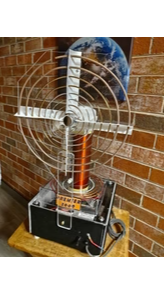From treating chronic pain without pills to customizing mental health care in real time, a quiet revolution is pulsing through the world of science—and it’s happening at the intersection of electricity and biology.

At its core, bioelectromagnetics is the study of how living systems interact with electromagnetic fields. While that may sound like something out of Sci-Fi, this field has been steadily gaining credibility—and funding—over the past two decades. Researchers are exploring how different frequencies of energy may support healing, reduce inflammation, or even influence mood and brain function.
Recent breakthroughs in the field have highlighted how the body's own electromagnetic signals can be read and, potentially, modulated to restore balance. Think of it like fine-tuning an instrument—only the instrument is your nervous system.
Bioelectronic medicine, a closely related field, has come a long way since ancient Egyptians used electric fish to treat pain. Today, non-invasive devices are being developed to monitor and interact with the body's internal signaling systems. These include sensors that track changes in the autonomic nervous system and deliver customized responses—without relying on pharmaceuticals.
One especially promising area? Closed-loop systems. These smart technologies continuously gather feedback from the body to adjust stimulation levels in real time. For those with depression or chronic inflammation, this may mean receiving the exact amount of neuromodulation needed at any given moment.
As understanding deepens, so does curiosity about how cells may respond to specific electromagnetic environments. Researchers have noted that cells emit ultra-weak light and electric signals—suggesting that internal communication isn't limited to just chemical messengers.
This is where multiwave devices enter the picture. Designed to emit a wide range of frequencies, these tools let the body "choose" what resonates.
One example? The PREMIER 2000—a recently launched experimental device developed by physicist Dr. Thomas Valone. Built on theories from early 20th-century radiobiologist Georges Lakhovsky, the system emits electromagnetic waves from a Tesla coil through gold, silver, and copper antenna loops—creating what some call a "frequency bath" for biological systems.
While these systems are not intended for medical treatment or FDA-approved use, they offer a window into the growing trend of frequency-based research.
The implications are wide-ranging. In the mental health space, inflammation and neuro-immune dysfunctions are increasingly linked to anxiety, PTSD, and even long-COVID. Emerging bioelectromagnetic approaches may allow clinicians to track biomarkers of inflammation and adjust neuromodulation treatments accordingly.
Elsewhere, electromagnetic fields are being tested for applications like:
Even trees and animals use bioelectric signals to communicate and adapt to their environments—suggesting nature figured this out long before we did.
As research continues to evolve, bioelectromagnetics is a field to watch—bridging neuroscience, energy medicine, and cellular biology. While not yet mainstream, tools that harness the body's own electromagnetic nature may soon shape how we diagnose, monitor, and support health in ways that feel less invasive—and more aligned with how the body already works.
If you're exploring the frontiers of frequency research or building experiments around cellular resonance, multiwave systems like the PREMIER 2000 may offer a compelling starting point for investigation.
